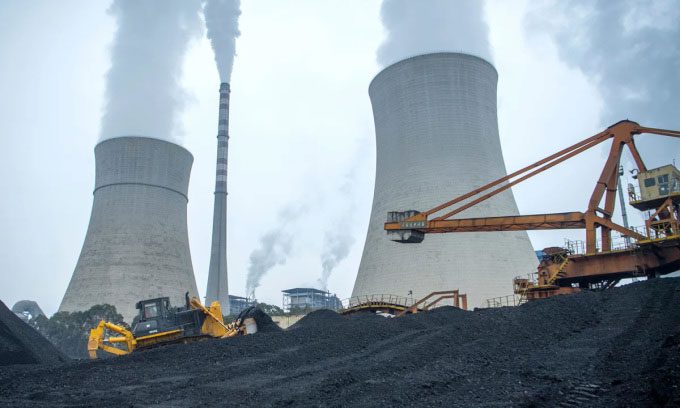China is the largest greenhouse gas emitter, and the country’s carbon neutrality solutions are often viewed as crucial for the planet’s future.
Emission Levels

Bulldozer pushing coal onto a conveyor belt at the Jiangdu power plant in Sichuan Province, China, on January 28, 2022. (Photo: Liu Zhongjun/China News Service)
In 2021, China emitted 14.3 billion tons of CO2 equivalent (CO2e – a unit for measuring all greenhouse gases), according to data from the Potsdam Institute for Climate Impact Research. This makes China the largest emitter in the world today, although historically, it still ranks behind the United States. According to the International Energy Agency (IEA), there is no “reasonable pathway” to maintain a temperature increase of 1.5 degrees Celsius compared to pre-industrial levels—the goal set at the 2015 Paris Climate Summit—without China.
Sources of Emissions
Coal is the largest contributor to China’s CO2 emissions due to its significant role in electricity generation. Almost 50% of CO2 emissions come from the power sector, while about 60% of the country’s electricity production still relies on coal, according to the IEA. The industrial sector accounts for approximately 36% of carbon emissions, transportation represents 8%, and construction contributes around 5%.
China is rapidly developing additional renewable energy sources, especially solar power. Currently, the country aims to install 230 GW of wind and solar energy this year, more than double the combined installed capacity of the United States and Europe.
So far, the additional capacity has largely met the growing demand. This new capacity, including hydropower, is expected to help China reduce carbon emissions by 2024.
China’s Climate Goals
In 2020, Chinese President Xi Jinping committed to achieving peak carbon emissions before the end of 2030 and reaching carbon neutrality before the end of 2060. In 2021, Xi announced a halt to funding and building new coal plants abroad and introduced a new five-year plan with significant energy and carbon targets.
China aims to reduce carbon emissions per unit of GDP by more than 65% from 2005 levels and set a new target for installed wind and solar capacity of over 1,200 GW by 2030. According to the International Renewable Energy Agency (IRENA), as of 2021, the country had an installed capacity of 1,056 GW, far surpassing the second-place United States with only 345 GW.
In November, China also announced plans to control methane emissions, although no specific targets were provided. The country has yet to sign the global commitment proposed by the United States and the European Union to reduce methane, a gas that has a shorter lifespan than CO2 but is more harmful.


















































